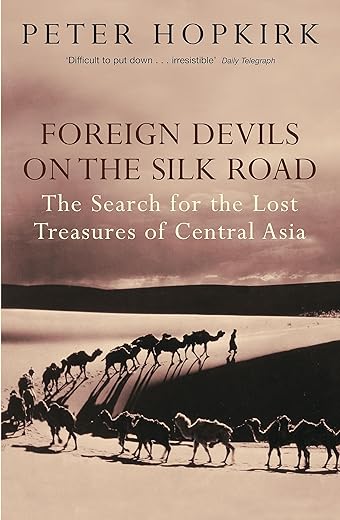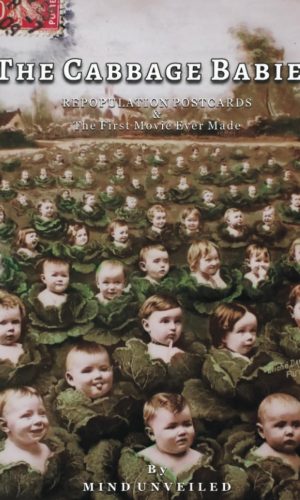Foreign Devils on the Silk Road: The Search for the Lost Treasures of Central Asia
£9.00£10.40 (-13%)
The Silk Road, which linked imperial Rome and distant China, was once the greatest thoroughfare on earth. Along it travelled precious cargoes of silk, gold and ivory, as well as revolutionary new ideas. Its oasis towns blossomed into thriving centres of Buddhist art and learning. In time it began to decline. The traffic slowed, the merchants left and finally its towns vanished beneath the desert sands to be forgotten for a thousand years. But legends grew up of lost cities filled with treasures and guarded by demons. In the early years of the last century foreign explorers began to investigate these legends, and very soon an international race began for the art treasures of the Silk Road. Huge wall paintings, sculptures and priceless manuscripts were carried away, literally by the ton, and are today scattered through the museums of a dozen countries. Peter Hopkirk tells the story of the intrepid men who, at great personal risk, led these long-range archaeological raids, incurring the undying wrath of the Chinese.
Read more
Additional information
| Publisher | John Murray, Revised ed. edition (27 Mar. 2006) |
|---|---|
| Language | English |
| Paperback | 288 pages |
| ISBN-10 | 0719564484 |
| ISBN-13 | 978-0719564482 |
| Dimensions | 12.7 x 1.91 x 19.69 cm |






by Vostok 1
This book is a bit of a sideshow to “The Great Game” and continues the theme of competition between imperial powers in central Asia. This time though competing for archaeological artefacts rather than the countries themselves and because of this there is slightly less of immediate danger and the book is not quite as enthralling as it’s big brother of a book.
The main protagonists in the book are explorers, archaeologists, adventurous historians and soldiers with interest in these field who ,in the late 19th century, sough for their countries the artefacts and literature from the early Buddhist mini states that circled the Takla Makan dessert today in western China and a probably but not mentioned in this book some earlier materials. If you knew nothing of this story then I’m sure you would have found this book 5 star but unfortunately this is the second book I have read covering the topic so I didn’t get buzz from learning something completely new. Hopkirk does add however plenty of details about the protagonists that I had been unaware of and did broaden my knowledge of this period of history.
This was my 3rd Hopkirk book and the two books I have read previously were gripping so I don’t doubt that this book will rate highly for anyone who has read any of his other titles.
Not as long as “The Great Game” but still worth the money.
by North Yorkshire
This is a short book (around 140pp) that tells the story of the late nineteenth and early twentieth century scholar adventurers who located, excavated (and then stole) the cultural treasures of the silk road. This was mainly around the Gobi and Taklamakan deserts, where the conditions preserved texts and fresco paintings well. We follow the intrepid Mark Aurel Stein and Paul Pelliot as they raced to beat each other to find the key sites in this inhospitable landscape. The Dunhuang cave is the main archaeological find – thousands of ancient scrolls and texts that are still being worked over.
Hopkirk open dns closes the book with some sympathetic notices about how angry China is about the removal of its cultural heritage and how most of the Western museums it ended up in rarely actually exhibit this stuff (and sometimes don’t even look after it).
I read it because I have liked Hopkirk’s studies of the history of the Silk Road lands before. He has a good knowledge of the area and its past and he is able to convert that into good storytelling – both for the individual activities and the broader trend (here of scholarly predation). His books have always been popular and they haven’t lost anything of their original sparkle.
by S. Smith
I’m particulary interested in this area (the Gobi and Taklamakan deserts and surrounding area) so I enjoyed this. The book deals with the various explorers who went to Central Asia to dig up and remove artifacts and objects to put into museums in Germany, the UK, France etc. These items did belong to the Chinese and also should remain in situ to preserve the past? But in such a turbulent area at war with itself, conflicting religions and neglect destroyed those pieces which were left there, so who is right? Its not really right to remove items such as these from cities buried in sand centuries ago, but if you don’t retrieve them and put them in museums in controlled atmosphere where they can be seen, nothing is gained either, so its a conflict, but some of the tactics used by the explorers to gain access to manuscripts and then remove them to Europe are controvertial to say the least. That said, these intrepid early explorers went through great personal suffering in hostile areas not designed for human habitation in order to bring these pieces to where they can be seen and they deserve credit for that.
by Gs-trentham
Peter Hopkirk’s books on central Asia have two virtues that are not often found together: they are learned, thoroughly researched works that wrap their scholarship in anecdote and conflict. Foreign Devils takes the author in the steps of a handful of sturdy explorers and antiquarians who, between about 1890 and 1940, ventured into the Taklamakan, Lop Nor and Gobi deserts in search of evidence of the civilisations which once flourished there and are now buried beneath the sand.
Literally thousands of artefacts were discovered by these intrepid individuals and mostly removed to museums in the west, notably but not exclusively to London, St Petersburg and Berlin. The stories of the extreme hardships that accompanied these expeditions are gripping, often awe-inducing. But Hopkirk doesn’t neglect the moral issues: the vast majority of the items removed belong – spiritually at least – to China. The question is: had China been left to its own devices would these items have been recovered for the pleasure and education of later generations, or were the explorers saving them from degenerating to dust, never to be seen? In short, were the Foreign Devils saviours or criminals? Even if the reader comes down, as Hopkirk seems to himself, on the side of the former, there remain other serious issues; the British Museum, which displays a mere fragment of its huge collection, comes in for particular opprobrium.
This is more than just a vicarious adventure story; with the romance of the Silk Road that drew Marco Polo and so many questing travellers at an end, the reader will be left with much food for thought.
by Anon reviewer
I have read most of Hopkirk’s books on the silk road and Great Game and this one is of the same high quality. It makes me want to go and explore the places in the book and really brings the time period and places to life.